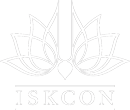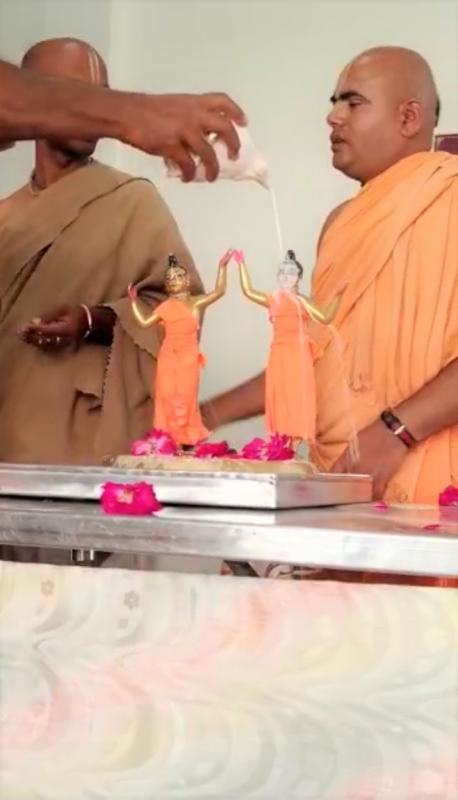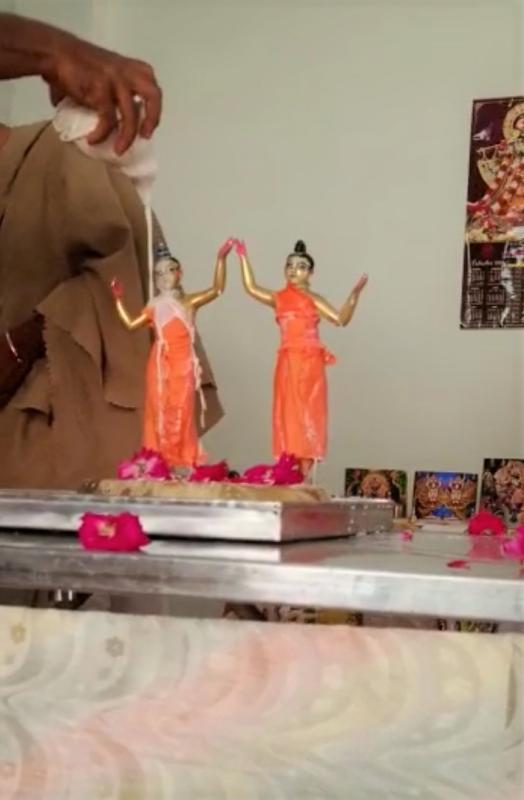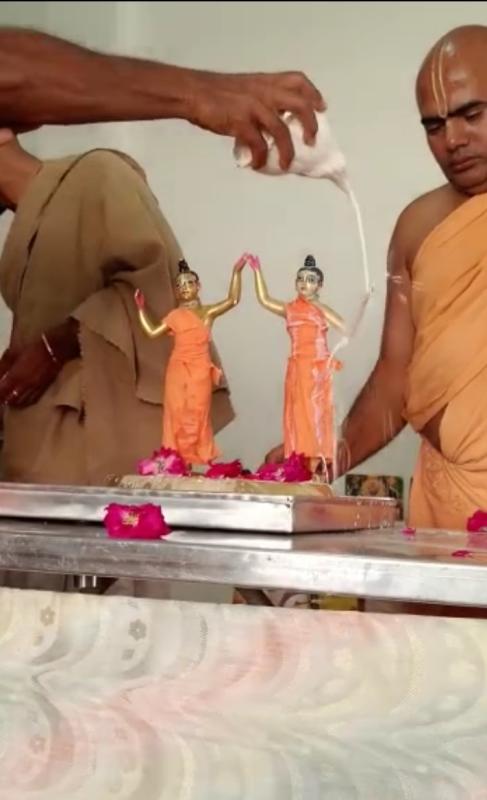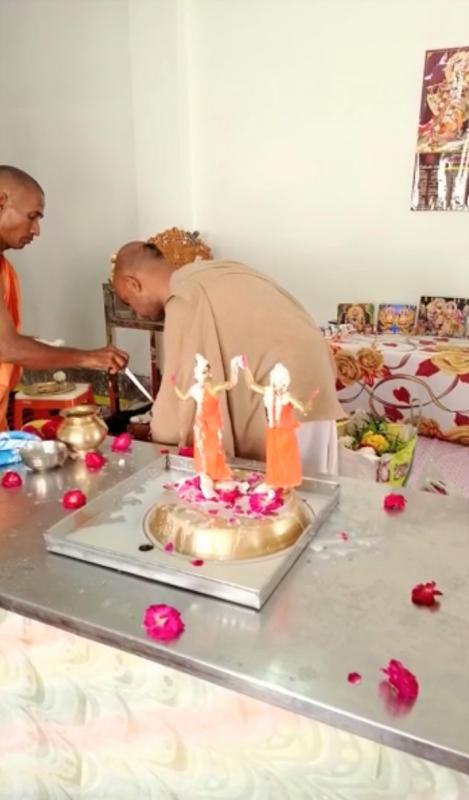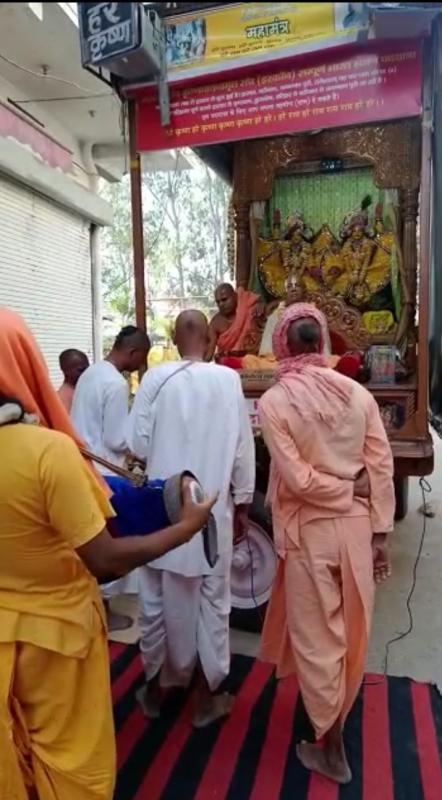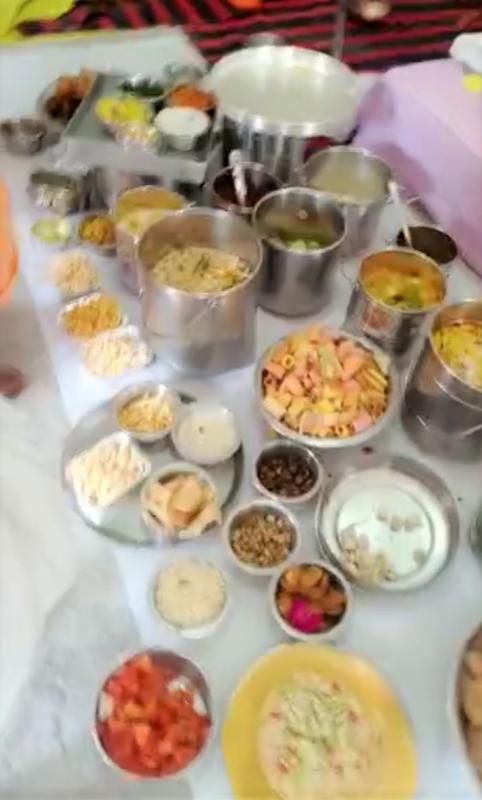By Acarya dasa, All India Padayatra leader
Just before Ramanavami the All India Padayatra was close to a town named Ashta, about 75km southwest of the city of Bhopal in Madhya Pradesh. We had thought to celebrate Ramanavami at Ashta, but as we were unable to contact anyone for the preparations we went there as an advance party. There is an Annapurna matajis’ temple in the town but also a Muslim community nearby, so it would have been difficult to celebrate Ramanavami there.
We were not understanding what to do. I called the Ujjain ISKCON temple where there is Sitanath dasa, a Bhakti Charu Maharaja disciple, and he gave me the contact number of a devotee doctor in Bhopal. The doctor prabhu booked Manasa Bhavana for us, which is in a very good area of Bhopal, but then we heard from a devotee named Sandip Soni. He is connected to ISKCON and when he realised the AIP would be in his area for Ramanavami called me to visit a possible festival venue.
Sandip Soni has his own large kalyana mandap (pavilion for public rituals) built near his house. We observed it and liked it and padayatra, only 15km away, arrived there the same day. Everything was arranged for us and there were people there celebrating Navaratri, so we performed a grand sankirtan in front of the Durga pandal and many people purchased sets of three books, namely the Krishna Book, the Bhagavad-gita and the Ramayana. We also made announcements of the Ramanavami celebrations and invited people to the programme. In Madhya Pradesh people have a devotional spirit towards Sri Ramachandra. Normally if one says Hare Krishna the other replies Hare Krishna, but here they say Jai Sri Rama or Siya Rama.
We then made plans for Ramanavami. We began the day with mangal arati and observed a fast till 12 noon. The bhoga preparations were ready by 9am and at 10am the celebration began with bhajans glorifying Lord Rama. Then came an abhisheka of Sri Sri Nitai-Gaurasundar. The guests were invited to perform abhisheka and kirtan was going on powerfully. I gave a talk on the glories of Lord Rama and fifty-six bhogas were offered to Their Lordships. After maha arati, prasad was served to all those assembled. Everyone appreciated prasadam, with one of the guests saying, “We felt like we were at an ISKCON temple. Hats off to your service attitude.”
That evening we contacted everyone to attend a shobha-yatra. Ashta’s Narmadeshwar mahadev temple trustee called us and people from the society came to the shobha-yatra. We did Gaura arati and read about pastimes from the Ramayana, including how effective Ramakatha is in our lives, continuing with extracts from Sita Mata and Sri Krishna biographies and discussing how wonderfully Hanumanji served Lord Rama, so that even today everyone remembers him as a great devotee of Lord Ramakatha.
The next day as we were leaving members of the public again shared their realizations, saying they felt as if Lord Ramachandra had visited their place and They were now leaving after staying for one day. I said that our Nitai-Gaurasundar are Rama-Laxman Themselves. The Lord had shown Murari Gupta His divine form as Rama: jei gaura sei kṛiṣhṇa sei jagannāth – Gauranga is Krishna and He is Jagannath. I also told them about Mahaprabhu.
It was a very nice programme at Ashta and from there we left for Sehore where there is a local devotee who had served at the ISKCON temple in Bangladesh. While leaving I was feeling unwell, so our well-wisher Durgesh Dubey took me to the hospital for treatment as the devotees prayed for me. I soon recovered, ready to serve Their Lordships again. This was how we celebrated Ramanavami.
Hare Krishna!
